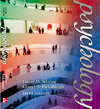For General Works on Learning Brislin, R. W., Bochner, S., and Lonner, W. J. (Eds.). (1975). Cross-cultural perspectives on learning. New York: Halsted Press. Domjian, M. (1998). The principles of learning and behavior (4th ed). Monterey, CA: Brooks/Cole. For More on Classical Conditioning Braveman, N. S., and Bronstein, P. (Eds.). (1985). Experimental assessments and clinical applications of conditioned food aversions. New York: New York Academy of Sciences. Davey, G. (1987). Cognitive processes and Pavlovian conditioning in humans. New York: Wiley. Gormezano, I., Prokasy, W. F., and Thompson, R. F. (Eds.). (1987). Classical conditioning. Hillsdale, NJ: Erlbaum. Pavlov, I. P. (1927/1960). Conditioned reflexes. Mineola, NY: Dover. For More on Operant Conditioning Kazdin, A. E. (1977). The token economy: A review and evaluation. New York: Plenum. Larkin, J., Scheftic, C., and Chabay, R. W. (Eds.). (1993). Computer-assisted instruction and intelligent tutoring systems. Hillsdale, NJ: Erlbaum. Peterson, C., Maier, S. F., and Seligman, M. E. P. (1993). Learned helplessness: A theory for the age of personal control. New York: Oxford University Press. Schwartz, M. S., and Andrasik, F. (1998). Biofeedback: A practitioner's guide (2nd ed.). Westport, CT:Guilford. Skinner, B. F. (1938). The behavior of organisms. New York: Appleton-Century-Crofts. Skinner, B. F. (1948). Walden two. New York: Macmillan. Thorndike, E. L. (1931/1970). Human learning. Cambridge, MA: MIT Press. Tunick, M. (1992). Punishment: Theory and practice. Berkeley: University of California Press. For More on Biological Constraints on Learning Klein, S. B., and Mowrer, R. R. (Eds.). (1989). Instrumental conditioning theory and the impact of biological constraints on learning. Hillsdale, NJ: Erlbaum. Klein, S. B., and Mowrer, R. R. (Eds.). (1989). Pavlovian conditioning and the status of traditional learning theory. Hillsdale, NJ: Erlbaum. For More on Cognitive Learning Amsel, A. (1988). Behaviorism, neobehaviorism, and cognitivism in learning theory: Historical and contemporary perspectives. Hillsdale, NJ: Erlbaum. Bandura, A. (1986). Social foundations of thought and action: A social-cognitive theory. Englewood Cliffs, NJ: Prentice Hall. Heyes, C. M., and Galef, B. G., Jr. (Eds.). (1996). Social learning in animals: The roots of culture. San Diego: Academic Press. Liebert, R. M., and Sprafkin, J. (1988). The early window: Effects of television on children and youth. New York: Pergamon. Miller, N. E., and Dollard, J.(1962/1979). Social learning and imitation. Westport, CT: Greenwood. Tolman, E. C. (1932). Purposive behavior in animals and man. New York: Appleton-Century-Crofts. For More on Contributors to the Study of Learning Bjork, D. W. (1993). B. F. Skinner: A life. New York: Basic Books. Buckley, K. W. (1989). Mechanical man: John Broadus Watson and the beginnings of behaviorism. New York: Guilford. Evans, R. I. (1989). Albert Bandura: The man and his ideas - A dialogue. New York: Praeger. Gray, J. A. (1979). Ivan Pavlov. New York: Viking Press. Joncich, G. (1968). The sane positivist: A biography of Edward L. Thorndike. Middletown, CT: Wesleyan University Press. Sechenov, I. M. (1935/1973). I. M. Sechenov: Biographical sketch and essays. Salem, NH: Ayer. | 


 2002 McGraw-Hill Higher Education
2002 McGraw-Hill Higher Education

 2002 McGraw-Hill Higher Education
2002 McGraw-Hill Higher Education